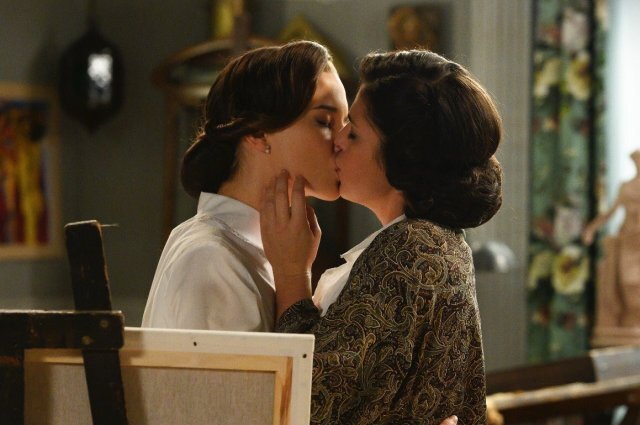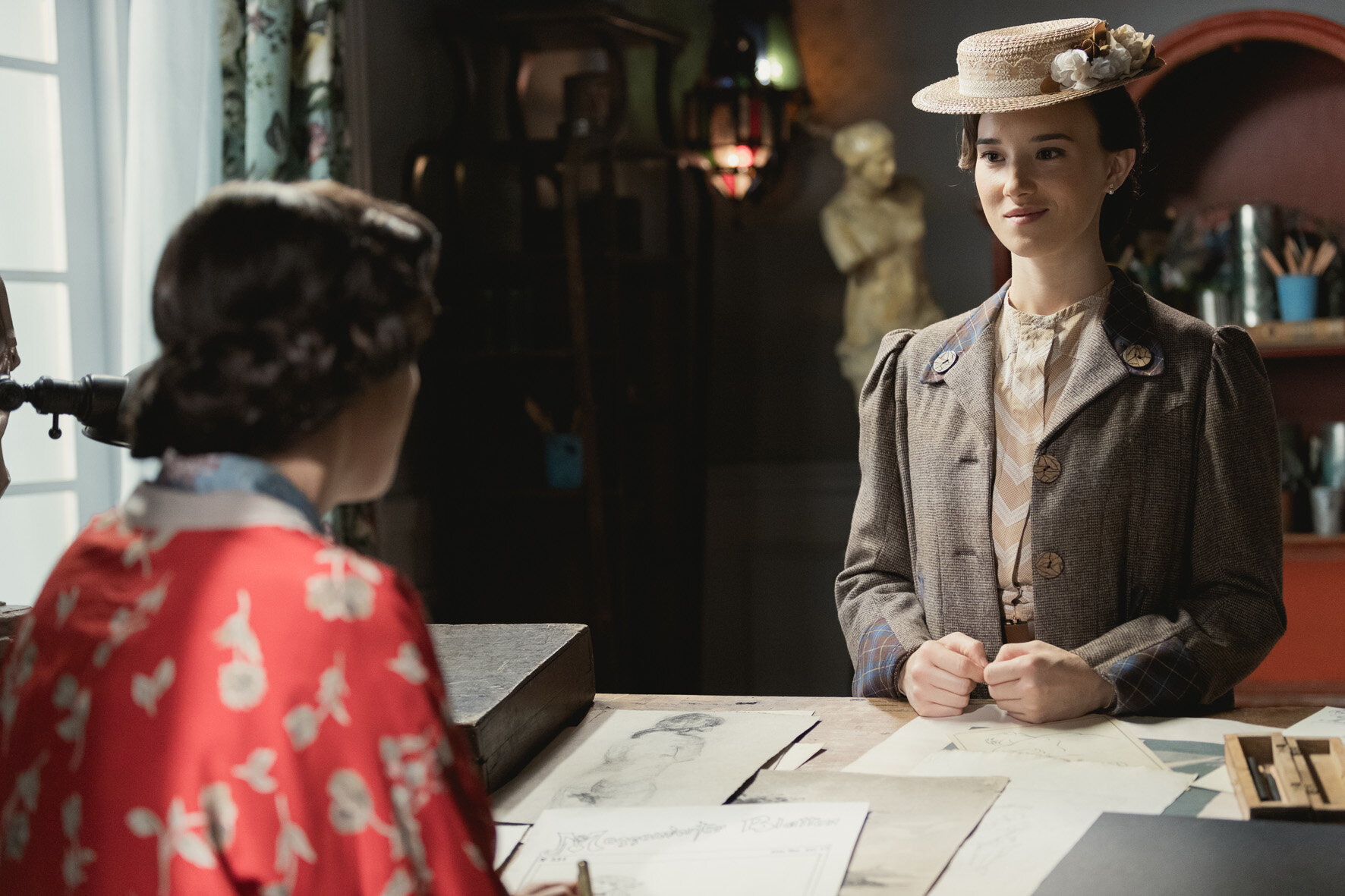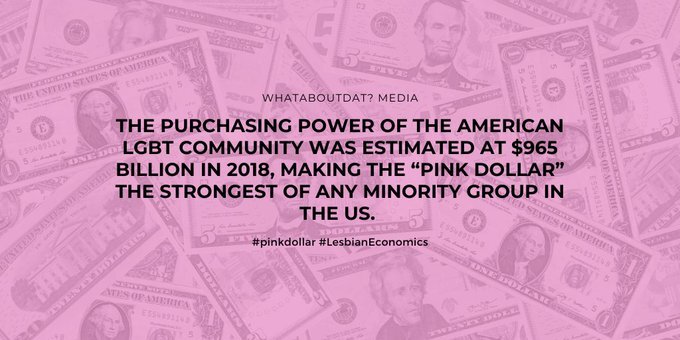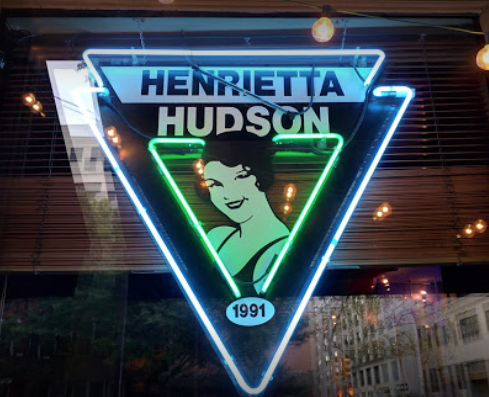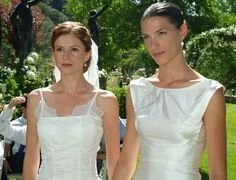Escrito por Karen Frost
Traducido por Catalina Fuentes
Ecosistema: Una gran comunidad de organismos vivos que viven en una red interconectada en una relación simbiótica y equilibrada entre sí.
Visto científicamente, los fandoms de la televisión son ecosistemas. Son comunidades vibrantes, coloridas y dinámicas que conectan a las personas a través del tiempo y la geografía en una red adaptativa y en constante cambio. Como todos los ecosistemas, son simbióticos: los fans obtienen energía del programa de televisión que aman, que luego reflejan de nuevo en el sistema. El programa y las actrices asociadas con él absorben la energía de los fans y la canalizan hacia una mayor producción en un ciclo de retroalimentación interativa. O, para usar una analogía diferente, la relación fan-show es como un fuego en un día frío: cuanto más se acumulan los fans, como la madera, más se calienta arde el fuego y mas calido se vuelve. Como señaló recientemente un fanático de la música, los fanáticos son esenciales para el éxito de un proyecto, pero los fandoms llevan ese éxito a niveles estratosféricos.
Hay tres componentes en los ecosistemas fandoms de TV: los fans, el elenco y las redes sociales / relaciones públicas. Este artículo describe cómo estos componentes trabajan juntos en el ecosistema para crear una relación positiva y simbiótica. Si usamos el fandom de Maitino (que está asociado con la pareja de lesbianas Maite y Camino en el programa español "Acacias 38") como un caso de estudio para mostrar estas ideas. El punto general es: los fandoms son dinámicos. Con actos intencionales, pueden crecer. Es probable que los fandoms más exitosos sean exitosos porque los tres componentes trabajan juntos en sincronía. Entonces, para cualquiera que sea miembro de uno de estos tres componentes, existe el potencial de tomar lo que ya es bueno y hacerlo aún mejor simplemente agregando energía adicional al ecosistema.
Componente 1: The Fans
Es evidente que un programa de televisión sin fans se cancela inmediatamente. Los espectadores son esenciales para cualquier proyecto. Pero no todos los espectadores son fans y no todos los fans son capaces de crear un fandom robusto. A continuación, se muestra un desglose de lo que los fans aportan al ecosistema de fandom, lo que reciben de él, y las dos figuras clave que surgen en los fandoms de la televisión lésbica para ayudar a nutrir y hacer crecer el fandom.
Lo que los fans aportan al ecosistema: según la etimología más ampliamente aceptada, la palabra "fans" es una versión abreviada de la palabra fanático, que significa "marcado por un entusiasmo excesivo y, a menudo, una intensa devoción". Lo que diferencia a los espectadores casuales de los fans es que el fanatismo de los fans se convierte en parte de su identidad personal. Asisten a convenciones, comentan en las redes sociales, cuelgan carteles, visten camisas, van a eventos de fanáticos, crean fan fiction / art / videos, etc. Colocan carteles publicitarios en Times Square para apoyar a sus actrices favoritas y usan campañas en línea para renovar los espectáculos por temporadas adicionales. Los fanáticos aportan pasión, energía y tamaño al ecosistema, lo que puede llevar a nominaciones a premios, espectáculos que duran más y que las historias se amplien.
Los fans de la televisión queer en particular, son un grupo grande y vocal. Se extienden por todo el mundo, trascendiendo la nacionalidad, el idioma y los continentes. Aunque la corriente principal aún no se ha dado cuenta en su mayor parte, las fanáticas queer femeninas han creado algunos de los ,as fertiles ecosistemas de fandom de TV del mundo. (Es una de las razones por las que he alentado a los shows a agregar más parejas de lesbianas). Las mujeres queer se cuentan por millones y tienen hambre de representación. Traen a sus ecosistemas de fandoms una pasión desenfrenada y un gran número.
¿Cuántos fans de la TV lesbica hay? Es imposible saber exactamente, pero causan una gran impresión donde quiera que vayan. En una entrevista reciente, por ejemplo, los creadores de la serie web #Luimelia, que dio a la pareja lésbica de Luisita y Amelia del programa español "Amar es para siempre" su propio mini spin-off, notaron que los Tweets que mencionan a Luimelia produjeron más de 40 millones de impresiones durante la temporada 2018/2019, que fue diez veces más impresiones que el programa de la temporada anterior. Aquí hay varias métricas de redes sociales de Maitino que muestran el impacto de las fanáticas queer:
Twitter: según el sitio de seguimiento de hashtags Talkwalker, del 13 al 20 de febrero, hubo 30.900 conversaciones en Twitter que mencionaron "Maitino", con un alcance potencial de 135,2 millones de usuarios de Twitter. Por contexto, eso es casi el triple de la población de España (46,7 millones). El 17 de febrero, #LaResistenciaMaitino superó los 16,000 tweets.
YouTube: el video más visto de Maitino, “Acacias 38: La primera vez de Camino y Maite # Acacias1161”, tiene 1.88 millones de visitas, lo que lo convierte en el sexto video más visto de YouTube para el canal de YouTube @RTVESeries y el video más visto "Acacias 38".
Instagram: Aria Bedmar (quien interpreta a Camino) mencionó en una entrevista que después del primer beso de Maitino, repetinamente comenzó a recibir miles de nuevos seguidores de Instagram al día. Al momento de escribir este artículo, ella tiene 27,100 seguidores. Ylenia Baglietto (que interpreta a Maite) tiene 15.400. La cuenta oficial de Instagram del programa solo tiene 15.200 seguidores, mientras que Susana Soleto, que interpreta a la madre de Camino, tiene 2.381 seguidores.
Qué reciben los fans del ecosistema: en la era de Internet, los fandoms han convertido lo que alguna vez fue un evento pasivo, en gran medida individual (sentado en casa viendo la televisión) en una experiencia comunitaria participativa compartida en línea. Ver lo que sucede en la TV es solo una fracción de la experiencia. Los fandoms ofrecen comunidad, compromiso activo con el material e incluso la oportunidad de interactuar con las actrices. Es una oportunidad para formar parte de un todo mayor. Particularmente para la comunidad LGBT, los fandoms podrían ser el único contacto que tienen con otras personas queer. Es un espacio seguro donde pueden compartir emociones, discutir sus vidas y sentirse representados.
Dos tipos clave de fanáticos hacen crecer el fandom: los mayores fandoms lesbicos de TV tienen cientos de miles, si no millones, de fans alrededor del mundo. Pero no todos los fans juegan el mismo papel en el fandom. Basados en la observación, dos figuras clave emergen rápidamente en la mayoría de los fandoms que actúan como puntos de reunión naturales para los fanáticos. Estas cifras fomentan el crecimiento del ecosistema al aumentar la visibilidad del fandom en línea. Ellos son:
El "primer compañero": todos los fandoms tienen animadores. Naturalmente, los fanáticos adoran su fandom y quieren gritar sobre lo genial que es. Pero en cada fandom hay una o más figuras con suficiente influencia para liderar el fandom. Al igual que las relaciones públicas gratuitas, son activos constantemente en las redes sociales y usan hashtagging para aumentar la visibilidad del fandom en la comunidad queer más amplia. Otros fanáticos buscan sus opiniones y reacciones, lo que los lleva a ganar cientos o miles de seguidores propios. El elenco puede retwittearlos y el equipo podría incluso desarrollar una relación informal con ellos. Yo llamo a estas figuras el "primer compañero". (Una aclaracion: las mujeres queer tienden a seguir "Ships" [Embarcacion traducido textualmente], la forma abreviada de “relación” [relationship]—, lo que significa que a menudo son fans de parejas románticas específicas en un programa, en comparación con el show en general. Las actrices que interpretan la relación son denominadas los "Capitanes de los barcos" [Ship Captains], y por eso creé el término "Primer compañero" para continuar con la metáfora náutica).
Normalmente, los primeros compañeros no están relacionados con nadie en el programa. Es posible que ni siquiera vivan en el mismo país donde se transmite el programa. En lo que probablemente sea el primer ejemplo de este tipo, uno de los primeros compañeros de Maitino es Kenzy Loevett, la esposa de Bedmar. Este es un escenario emocionante y único. Aunque Bedmar no es la primera actriz queer en un papel queer popular (Zoie Palmer en "Lost Girl" y Michelle Hardwick en "Emmerdale" inmediatamente me vienen a la mente), esta es la primera vez que otro importante (queer o heterosexual) ha sido Primer compañero, que yo sepa. Y es el epítome de la simbiosis fandom, en beneficio de los fanáticos de Maitino. Además de "fangirling" y lidera las principales campañas de hashtag de Twitter, como todos los Primeros Compañeros deben, Loevett brinda a los fanáticos acceso indirecto a Bedmar y Baglietto publicando videos y fotos detrás de escena.
Foto de boda deBedmar y Loevett de la cuenta de Instagram dearia_bedmar
2. Los traductores: los fandoms lesbicos son siempre internacionales. Cuanto más grande es el fandom, más idiomas se han traducido a los clips del programa. Maitino, por ejemplo, tiene traducciones al menos en inglés, francés, italiano, tailandés, turco, ruso, portugués, chino y alemán. Los traductores son un componente clave del ecosistema, que vale su peso en oro. La mayoría de los fandoms solo tienen una o dos personas que traducen y subtitulan en cada idioma. Sin traductores, un fandom estará limitado en lo grande que puede crecer internacionalmente.
Componente 2: El elenco
Para muchas personas, "fandom" es solo otra palabra para "fan", pero esta comprensión limitada del concepto margina el papel que desempeñan el elenco y las redes sociales / relaciones públicas del programa en el ecosistema. De hecho, el elenco y las redes sociales / relaciones públicas juegan un papel importante en el éxito de un fandom. Cuanto más involucrados están, más simbióticas son las relaciones en el ecosistema y más robusto se vuelve el ecosistema fandom.
En el caso de fandoms lesbicos de TV, el "elenco" se reduce a las dos actrices de la pareja de lesbianas. Esto es a la vez una bendición y una maldición. En el lado positivo, las actrices se benefician de la energía bulliciosa y sin diluir de los fans. La desventaja es que el intenso enfoque de los fanáticos coloca la carga del compromiso exclusivamente en ellos. Debido a que el centro de atención nunca se aleja de ellos, hay un constante atractivo para su atención, obligándolos a decidir cuánto tiempo y energía pueden dedicar a interactuar con el fandom.
Qué es lo que el elenco trae al ecosistema: si los fans aportan números y energía al fandom, las actrices aportan (además de sus deberes de actuación habituales) entusiasmo por el fandom y cierto grado de accesibilidad personal. En el mejor de los casos, las acciones tomadas por las actrices muestran a los fans que se preocupan por los fans y el fandom. Los fanáticos sienten que son "vistos" por las actrices y que todos son parte de una sola comunidad que se une por una causa mayor. Como sea que estas acciones se vean en la práctica varía significativamente, pero en su mayor parte implica una combinación de responder y retuitear Tweets de fans, Tweetear sobre cosas que suceden en la vida personal de las actrices, publicando shots tras bambalinas para el fandom en Instagram y participar en entrevistas centradas.
El uso de las redes sociales de Bedmar y Loevett es un ejemplo clásico y muy efectivo de interactuar con los fanáticos en las redes sociales para crear experiencia comunitaria de fandom. Bedmar ha respondido al fan art en Twitter, ha retwitteado entrevistas y ha publicado fotos de Maitino detrás de escena en Instagram. La cuenta conjunta de Instagram de Bedmar y Loevett, @wearekenzaria, anima a Maitino y comparte una historia de amor positiva (real) con sus seguidores. Yendo más allá, Bedmar y Loevett crean constantemente historias de Instagram para los fanáticos, y Loevett incluso creó camisetas de fanáticos de "Callate/me". Baglietto, mientras tanto, mantiene un perfil personal más bajo, pero es un prolífico reTweeter de artículos de noticias de Maitino.
En el pasado, escribí cómo las actrices pueden contribuir al ecosistema de fandom, utilizando estudios de casos extraídos específicamente de actrices en programas de televisión (para AfterEllen y GayBaeCo). La base de esos artículos es la siguiente: fandom lesbicos de TV pueden existir sin el compromiso de sus actrices, impulsadas por la energía de los fanáticos, pero cuanto mayor sea el compromiso del reparto, más entusiasta será el fandom. Dicho de otra manera, un "Ships" navegará sin "capitán", pero navega mejor cuando las actrices capitan activamente su barco.
Qué recibe elenco del ecosistema: en casi dos décadas de entrevistas con actrices en papeles queer, el consenso casi universal es que las actrices que han interpretado a un personaje queer obtienen una profunda gratificación personal de la gran cantidad de apoyo que reciben de los fanáticos. En Tweets, cartas, correos electrónicos y tarjetas, estas actrices reciben miles de mensajes de apoyo y amor (e inevitablemente, algunos acosadores). Inequívocamente, no hay paralelo cuando se interpretan roles heterosexuales. Por lo tanto, es una experiencia única en la vida. El impacto de ser parte de un fandom robusto también puede ser profesional. En todo el mundo, las actrices en roles de televisión queer han ganado premios nacionales de actuación, han sido promovidas de miembros recurrentes a miembros regulares del reparto, y han visto a sus seguidores en las redes sociales dispararse, todo lo cual puede tener beneficios tangibles para sus prospectos para participar en futuros roles.
Componente 3: Las redes sociales/Relaciones Publicas
El papel de las relaciones públicas de un programa de televisión es probablemente la parte menos reconocida del fandom y, sin embargo, en los últimos años, las redes sociales han aumentado drásticamente este rol. Ahora las cuentas oficiales de redes sociales de un programa pueden ser tan parte del fandom como los propios fanáticos. Estas cuentas actúan en varias ocasiones como animadoras, relaciones públicas y fanáticos. Los showrunners (como Emily Andras de “Wynonna Earp”) y los escritores (como Javier Grillo-Marxuach de “The 100”) también pueden formar parte del fandom, aunque este artículo no tratara sus historias.
Qué traen las PR/medios sociales al ecosistema: el departamento de Relaciones Públicas de TV trae al fandom una plataforma de medios sociales preestablecida y conexiones de la industria, que pueden usar para aumentar el fandom elevando su perfil. El departamento de relaciones publicas puede organizar entrevistas con las actrices, organizar material entre bastidores y compilar "lo mejor de" escenas,manteniendo a los fans enganchados y recompensados. Estos son algunos ejemplos de lo que RTVE y "Acacias 38" han hecho por el fandom Maitino:
Twitter: cuando se trata de la cuenta de Twitter para “Acacias 38”, Maitino es el rey indiscutible. ¿Hay alguna otra pareja en Acacias 38? No lo sabrías por su feed de Twitter. El Tweet anclado para la cuenta @ acacias38_rtve es una entrevista entre Baglietto y Bedmar. Alrededor del 90% de los tweets que se originan en la cuenta tienen Camino o Maitino como la foto en miniatura. La cuenta tiene una cinta roja en su nombre, un guiño a Maitino, y la cuenta twittea regularmente con los hashtags #Maitino y #Maitiners.
YouTube: además de subir entrevistas con Bedmar y Baglietto, "Acacias 38" ha creado fanvideos específicos de Maitino para YouTube. "Acacias 38: Maite y Camino, la historia de un amor prohibido #Acacias38", tiene 1.4 millones de visitas." Acacias 38: Los mejores momentos de #Maitino # Acacias38" también tiene 1.1 millones de visitas.
Qué reciben las relaciones públicas/redes sociales reciben del ecosistema: los fandom lesbicos mas populares producen grandes cantidades de rumores en las redes sociales y, como dicen en Estados Unidos, "Toda publicidad es buena publicidad". El Tweet promedio de @ acacias38_rtve sobre un tema que no es de Maitino genera alrededor de 75 me gusta y seis reTweets, pero los tweets de Maitino promedian más de 300 me gusta y más de 50 reTweets. Según todas las métricas de las redes sociales, Maitino es, con mucho, la pareja más popular en "Acacias 38" en este momento, y esta popularidad recientemente le valió a Bedmar y Baglietto una entrevista con Vodaphone Yu. Grandes fandoms significan más publicidad para el programa, lo que significa más espectadores y más ingresos publicitarios.
Crecimiento del Fandom
Juntos, los fans, las actrices y las redes sociales/relaciones públicas de un programa pueden crear un fandom capaz de tocar a miles e incluso millones de personas en todo el mundo. Para las mujeres queer, estos fandoms son oasis de comunidad en un mundo aún en gran medida homofóbico. Como pensamiento de despedida, los fandoms crecen cuando los nuevos fans son atraídos. Los fandoms como Maitino que aún están en las etapas iniciales pueden crecer exponencialmente al engancharse con otros fandoms. Un ecosistema más pequeño puede crecer aprovechando uno más grande. Además, los fanáticos no pueden ver lo que aún no saben que existe. Entonces, para cualquier nuevo fandoms, quizás la forma más rápida de crecer no es solo usar hashtags exclusivos de fandom, sino también usar los hashtags de otros fandoms. Después de todo, cada fandom es un ecosistema en un ecosistema lésbico global mucho, mucho más grande. #Juliantina #Luimelia #WayHaught #Creampuff #Flozmin #Barcedes
